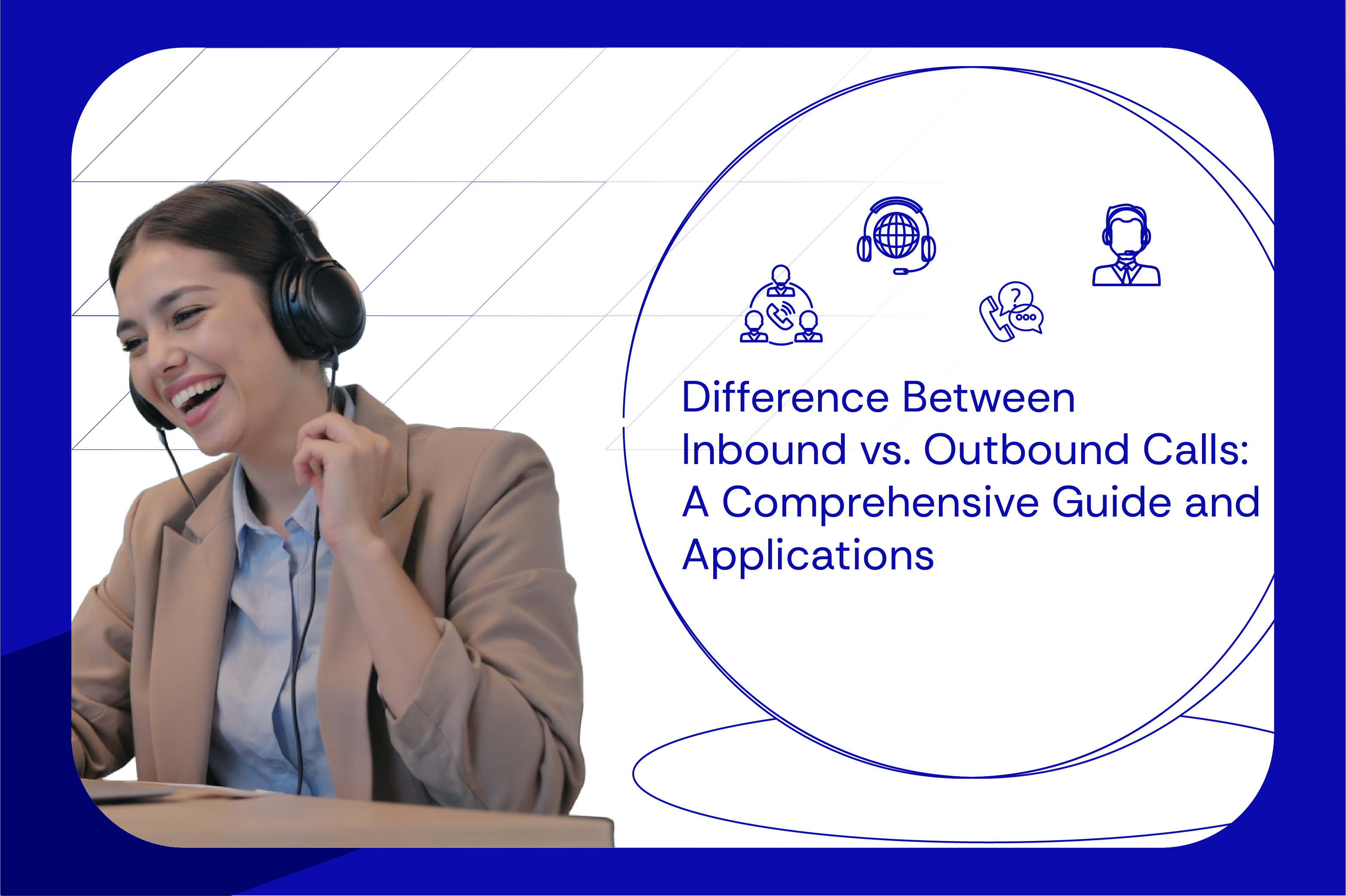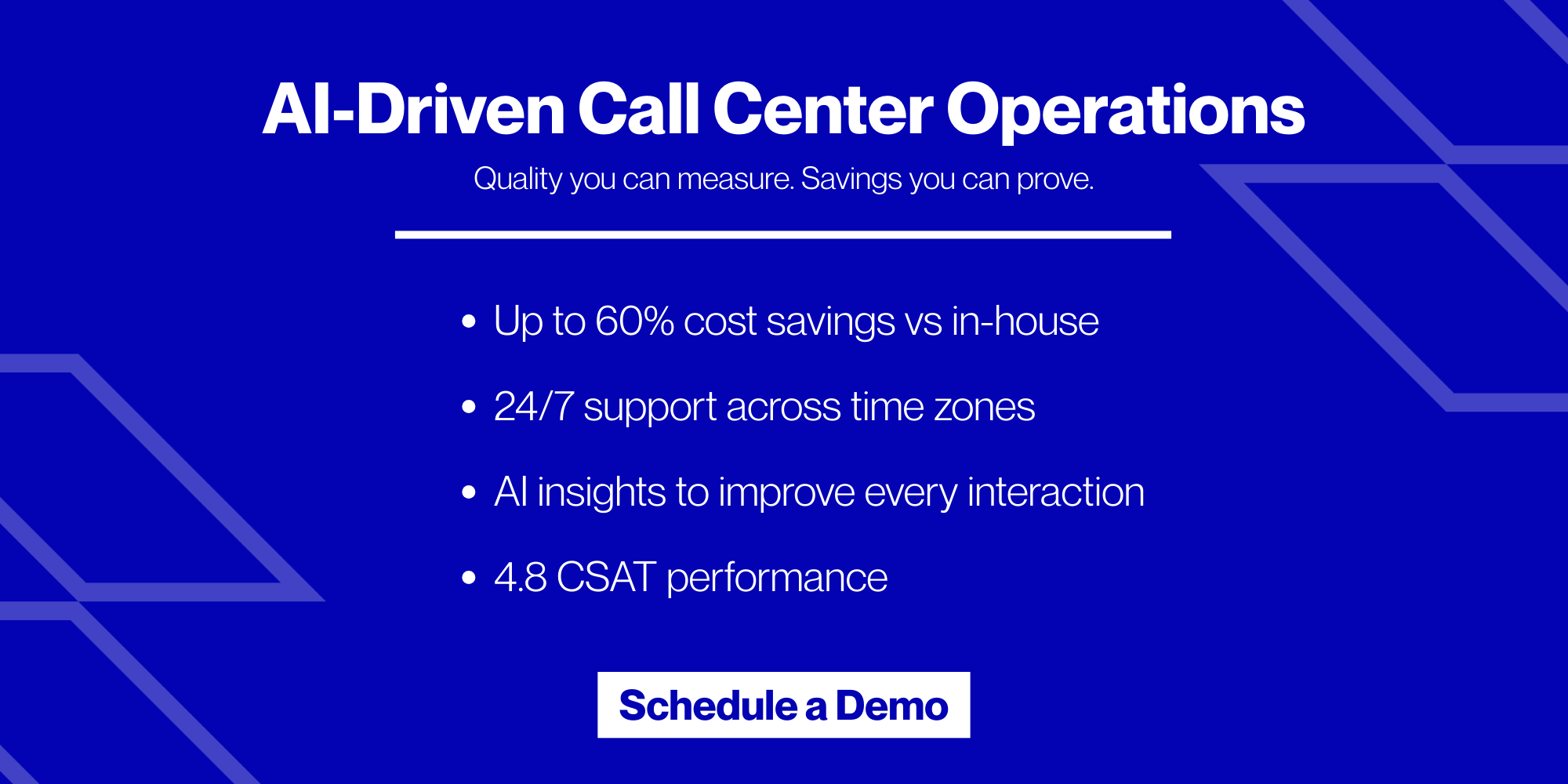Wondering about the inbound and outbound calls meaning? Inbound calls are calls coming in from customers. It could be for support, inquiries, or even placing an order. On the other hand, outbound calls are calls going out to customers. They are usually for sales, follow-ups, or reminders.
Every business communicates with its customers in different ways. While new technology is always emerging, the phone remains a key tool. It is used for answering incoming calls or reaching out to customers. This creates the concept of inbound and outbound calls.
Here, both inbound and outbound calls are expected to be a key force. But how should CX leaders at consumer brands in the US, UK and Australia use each type?
Both have their benefits and challenges. Businesses unaware of the inbound and outbound meanings and their application will find it tough to manage them. That’s where Atidiv’s answering service comes in. At Atidiv, we help D2C companies with $5M+ revenue manage inbound & outbound calls professionally, highlighting VPs and Directors visibility into customer interactions without affecting efficiency.
Want to know more and learn what is inbound and outbound? In this article, let’s understand the difference between inbound and outbound calls. Also, we will see their various use cases.
What are Inbound and Outbound Calls?

Did you know that 92% of all customer interactions happen over the phone? Yes, phone calls play a huge role in businesses. Most customers still prefer calling when they need help. Moreover, 41% of sales professionals say phone calls are their best tool for handling customer questions and closing deals.
So, whether it’s answering incoming calls or reaching out to customers, using the phone the right way can make a huge difference to your business’s success! Now, let’s gain more clarity and understand the inbound and outbound meanings.
Inbound call meaning
Inbound calls are when customers call your business. They usually reach out because they need the following:
- Help with a product or service they have already purchased
- Information about something they are interested in buying
- Support with billing or account issues
For businesses that focus on customer service, inbound call center services are highly important. They let you help customers instantly. This makes them happier and more likely to stay loyal.
Additionally, these calls let you know the real customer needs. This creates opportunities to offer them more products or services. This is particularly relevant for CX directors in US and UK-based D2C brands who handle 100+ daily inquiries, where reducing churn and increasing retention are critical KPIs for long-term growth.
Outbound call meaning
Outbound calls are when your business calls customers or potential customers instead of waiting for them to contact you. These calls are often used to:
- Find new customers
- Promote your products or services
- Follow up with existing customers to upsell or offer new deals
- Ask for feedback to improve your business
- Conduct market research to understand customer needs
If you are calling someone who hasn’t shown interest in your business before, it’s called a cold call. Generally, outbound call center services are considered a great way to increase sales and connect with customers in a proactive way. For D2C brands in Australia and the UK, outbound campaigns are often preferred by VPs of Customer Experience to ensure post-purchase engagement and improve repeat order frequency.
What is the Difference Between Inbound vs outbound Calls?
The main difference inbound vs outbound calls lies in the fact who starts the conversation! In the inbound calls, the customer calls the business, whereas in the outbound calls, the business calls the customer.
Let’s gain more clarity and see some key differences between inbound and outbound calls.
| Aspects | Inbound calls | Outbound calls |
| Who starts? | The customer | The business |
| Why? | To ask for help, make inquiries, get support | To sell, follow up, gather feedback |
| Type of call | Reactive (you respond to customer needs) | Proactive (you reach out to customers) |
| Examples | Customer support, billing questions, complaints | Sales calls, telemarketing, customer surveys |
| Skills needed | Good listening, problem-solving, patience | Persuasion, negotiation, sales skills |
Both inbound and outbound are best suited for CX leaders and VPs of consumer brands with $5M+ revenue, as they provide systematic data about improvements in customer lifetime value by helping increase operational efficiency.
Practical Applications of Inbound and Outbound Calls

Practical Applications of Inbound and Outbound Calls
Now, having understood the inbound and outbound meaning, let’s check out some practical applications of both these call types:
What Are Inbound Calls Used For?
- Customer Support: Helping customers with questions or problems.
- Technical Support: Assisting with troubleshooting and fixing issues.
- Billing Inquiries: Clarifying charges, processing payments, or handling refunds.
- Appointment Scheduling: Helping customers book appointments.
- Feedback Collection: Asking customers about their experience to improve services.
This service is ideal for D2C brands with $5M+ revenue that manage seasonal peaks in engagement and want to deliver reliable CX at a large scale.
What Are Outbound Calls Used For?
- Sales and Lead Generation: Finding new customers and promoting products.
- Customer Engagement: Checking in with customers and solving issues before they escalate.
- Feedback Collection: Calling customers for surveys and reviews.
- Appointment Reminders: Notifying customers about upcoming appointments.
- Promotional Campaigns: Informing customers about discounts, offers, or new products.
Outbound strategies are often used by senior CX managers in US and UK-based consumer brands to drive loyalty campaigns, increase subscription renewals and maintain a position in competitive markets.
Built for Scale. Driven by Data. Backed by Results.
Going Inbound or Outbound! Which One is Right for Your Business?
As mentioned above, the choice between inbound vs outbound calls depends on the actual needs of your business. Here’s how you can decide:
| Go with inbound calls | Go with outbound calls |
| Choose inbound calls if you are getting a lot of customer service or tech support calls and need to manage them professionally. | Choose outbound calls if you have a long list of leads and need to follow up and generate sales. |
Moreover, it is also recommended that you develop a balanced strategy and use both types of calls at different growth stages. Here one great option is to use the services of Atidiv. We offer omnichannel customer support and allow businesses to manage large volumes of calls easily.
We work with VPs and Directors of D2C brands across the US, UK and Australia, allowing them to scale CX operations at a large scale, reduce costs and deliver consistently good call handling quality.
Manage Your Calls Smartly, Build More Customer Trust

Till now, you must have understood the inbound and outbound calls meaning. Both inbound and outbound calls play an important role in business communication. Inbound calls help businesses provide customer support, answer inquiries, and resolve issues. They lead to better customer satisfaction. On the other hand, outbound calls focus on sales, lead generation, and follow-ups. They help businesses grow.
The choice between inbound and outbound calls depends on your business needs. For senior managers and directors at D2C consumer brands, the decision often comes down to balancing customer support efficiency along with sales strategies.
Ideally, for the best results, you should use a mix of both inbound and outbound strategies at different growth stages. Also, you should partner with a popular customer service provider, like Atidiv.
Do you want to handle calls professionally and improve customer experience? Choose Atidiv today and take your business to the next level!
FAQs On Inbound And Outbound Meaning
1. What is the difference between inbound and outbound calling?
Inbound calls come from customers who want support and have some inquiries. On the other hand, outbound calls are made by businesses for sales and promotions. Generally, inbound is considered customer-driven, whereas outbound is business-driven.
2. Which type of call is better for my business in 2025?
It depends on your business needs. If your business handles several customer support requests, inbound calls are important. In contrast, if your business goal is to increase sales and get more leads, outbound calls are more effective.
Here it is recommended to develop a balanced strategy by using both at different stages of your business.For example: D2C brands often rely on inbound during high demand seasons and outbound during slow periods to drive steady revenue.
3. How can inbound calls improve customer satisfaction?
Inbound calls allow businesses to instantly:
- Assist customers
- Answer questions
- Resolve issues
Please note that quick and professional responses build trust and loyalty. They ensure a better customer experience and develop strong long-term relationships.
4. What are the biggest challenges with outbound calls?
Outbound calls can be challenging due to the following:
- Low response rates
- Rejection
- Customer hesitation
However, by using proven sales techniques and personalization, your agents can improve their success rate.
5. Are cold calls still effective for sales?
Yes, when done right! As per a recent study, B2B cold calling campaigns can boost ROI by 40–50%. Generally, personalized and well-researched cold calls can convert leads into customers.
Instead of generic pitches, your agents should try to offer value and make calls after understanding the real customer needs. Also, they should prefer a friendly and non-pushy approach. This is particularly useful for CX leaders who aim to expand into new markets in the US & Australia.


